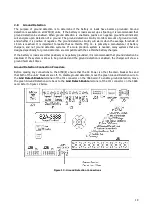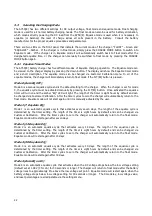
32
5.2
Troubleshooting Procedure
Troubleshooting should be performed only by trained service personnel or experienced electricians. Before
setting up any complicated testing or jumping to any conclusions, give the unit a general inspection.
Check the following:
1.
Check DC output cables, connections, battery type, and number of cells against the unit’s rating.
2.
Check unit specifications against customer order.
3.
Check input connections, input voltage and breaker size.
4.
Check for shipping damage, loose connections, broken wires, etc.
5.
Certain failures can be caused by defective batteries and customer loads; make sure batteries and loads are
free from defects.
NOTE:
If the problem is found to be located in the printed circuit boards, the board should be replaced. No
attempt should be made to repair circuit boards in the field.
When calling in for a service inquiry or for troubleshooting assistance, be sure to have all of the following
information on hand:
1.
Equipment model number and serial number.
2.
The actual AC input voltage.
3.
The DC output voltage with and without the battery.
4.
Result of the check of the AC and DC breakers.
5.
The actual DC output current and voltage, measured with battery and load connected to charger.
NOTE:
When ordering replacement parts, drawings, or schematics, always give model number, serial number
and AC input voltage.
Содержание A75D
Страница 2: ......





































